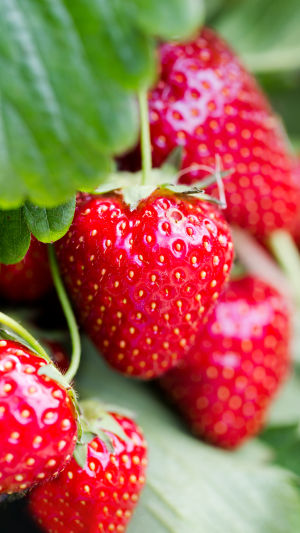Strawberries, a familiar fruit, come in various types. Homegrown strawberries are not only fresh and delicious but also serve as both a food source and a decorative plant, making them ideal for cultivation in gardens or pots.
Strawberries are uncomplicated yet valuable plants. When deciding to grow strawberries, consider a few factors that align with your available space and preferences.
Strawberry Growing Conditions
Strawberries thrive in spring, providing a cost-effective option compared to plants bearing fruit in autumn.
These plants prefer semi-shaded environments, making the east balcony an excellent spot to plant them without worrying about excessive light. A warm and humid atmosphere, along with proper ventilation, is essential, preferably on an unenclosed balcony.
Choosing a Planting Method
Strawberries can be propagated, transplanted, or cultivated from purchased seedlings. For convenient home cultivation, opting for small seedlings is recommended.
Although pricier, the investment is worthwhile for cultivating a manageable quantity. If cultivating on a larger scale, consider propagating and transplanting seedlings once they mature.
Tips for Potted Plants
Directly potting purchased strawberry seedlings is feasible. Use nutrient-rich soil or self-dug leaf mold soil mixed with granular soil and organic fertilizer. In cooler regions, cover potted plants with a film if temperatures drop below 5℃.
Remove the cover when the ambient temperature remains above 10°C for normal strawberry growth.
Daily Maintenance and Management
1. Watering: If your balcony is open, let nature's rain and dew handle watering. In closed balconies, manage dryness and humidity to ensure optimal growth. During the fruit-bearing phase, provide adequate water to promote large and tender strawberries.
2. Fertilization: Apply nitrogen fertilizer for quick growth after the initial base fertilizer. During flowering and fruiting stages, use potassium dihydrogen phosphate as foliar fertilizer for improved bloom, fruit production, and sweet taste.
3. Pruning: Regular pruning during strawberry growth prevents excessive spreading, saving nutrients for subsequent flowering.
Important Considerations
1. Fertilizer Use: Homemade fertilizers like bean dregs and rice water are suitable if fully decomposed. Dilute liquid fertilizer with water, especially for potent ones like potassium dihydrogen phosphate, to avoid damage.
2. Balcony Placement: Cultivate strawberries on east or south balconies for optimal growth. Avoid west-facing balconies, particularly in summer, to prevent strawberry leaves from drying out.
3. Ventilation: In closed balconies, prioritize ventilation, especially after watering, to accelerate soil evaporation and promote a healthy growth cycle.
As spring marks the peak season for strawberry growth and fruiting, planting and cultivating strawberries during this time is straightforward. With correct cultivation practices, you can enjoy picking fresh and worry-free strawberries daily.





